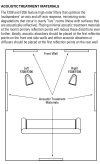- Joined
- Feb 16, 2022
- Messages
- 1,411
- Likes
- 2,801
The Salon2 also have the same boundary adjustments as the 208. I'm "assuming" that Revel decided that their functionality was worth putting in their Flagship speaker. Perhaps a part of getting the most from your speakers and room... perhaps not.OMG, you're driving those beautiful speakers with... ZIP WIRE!!??!? What gauge is that even? How can you hear ANYTHING?!??!?
Last edited:

